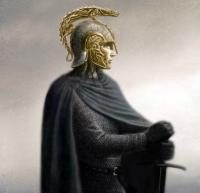0
















| Thumbs Up |
| Received: 31 Given: 311 |

Full Text Article [PDF]Variability of the Upper Palaeolithic skulls from Predmosti near Parav (Czech Republic): Craniometric comparison with recent human standards.
Abstract
One of the largest skeletal series of the Upper Palaeolithic period from Predmosti was destroyed during the Second World War, but the study of this material continues up to the present. The discovery of Matiegka’s original photographic documentation on glass plates [Veleminska et al., 2004. The use of recently re-discovered glass plate photo-documentation of those human fossil finds from Predmosti u Prerova destroyed during World War II. J. Nat. Mus. Nat. Hist. Ser. 173, 129–132] gives an opportunity to perform a new and detailed craniometric analysis of five adult skulls in their lateral projection.
The craniometric data were analysed using specialised Craniometrics software, and the analysis included morphological and dimensional comparisons with current Central European norms. The aim of the study was not only to monitor the skull shape as a whole, but predominantly, to evaluate the size and shape of various parts of the splanchnocranium.
The Upper Palaeolithic skulls are significantly longer, and male skulls are also higher than the current norms. The crania of anatomically modern humans are characterised by two general structural features: mid-lower facial retraction and neurocranial globularity. The height of the face of the Palaeolithic skulls corresponds to that of the current Central European population. The face has a markedly longer mandibular body (3–4 SD), while female mandibular rami are shorter. The skulls are further characterised by a smaller gonial angle, the increased steepness of the mandibular ramus, and the greater angle of the chin. These changes in the size and shape associated with anterior rotation of the face produce a strong protrusion of both jaws, but the sagittal inter-maxillary relationships remain unchanged. The observed facial morphology is similar to the Czech Upper Palaeolithic skulls from Dolní Věstonice.
This study confirms the main diachronic changes between skulls of Upper Palaeolithic and present-day human populations.
Last edited by mvbeleg; 06-14-2010 at 02:45 PM. Reason: Link Replacement
There are currently 1 users browsing this thread. (0 members and 1 guests)
Bookmarks